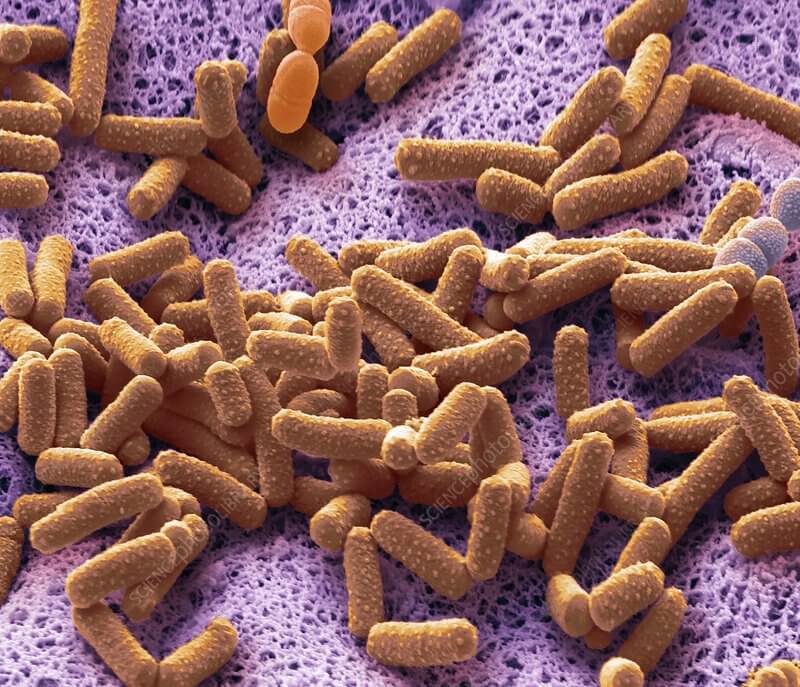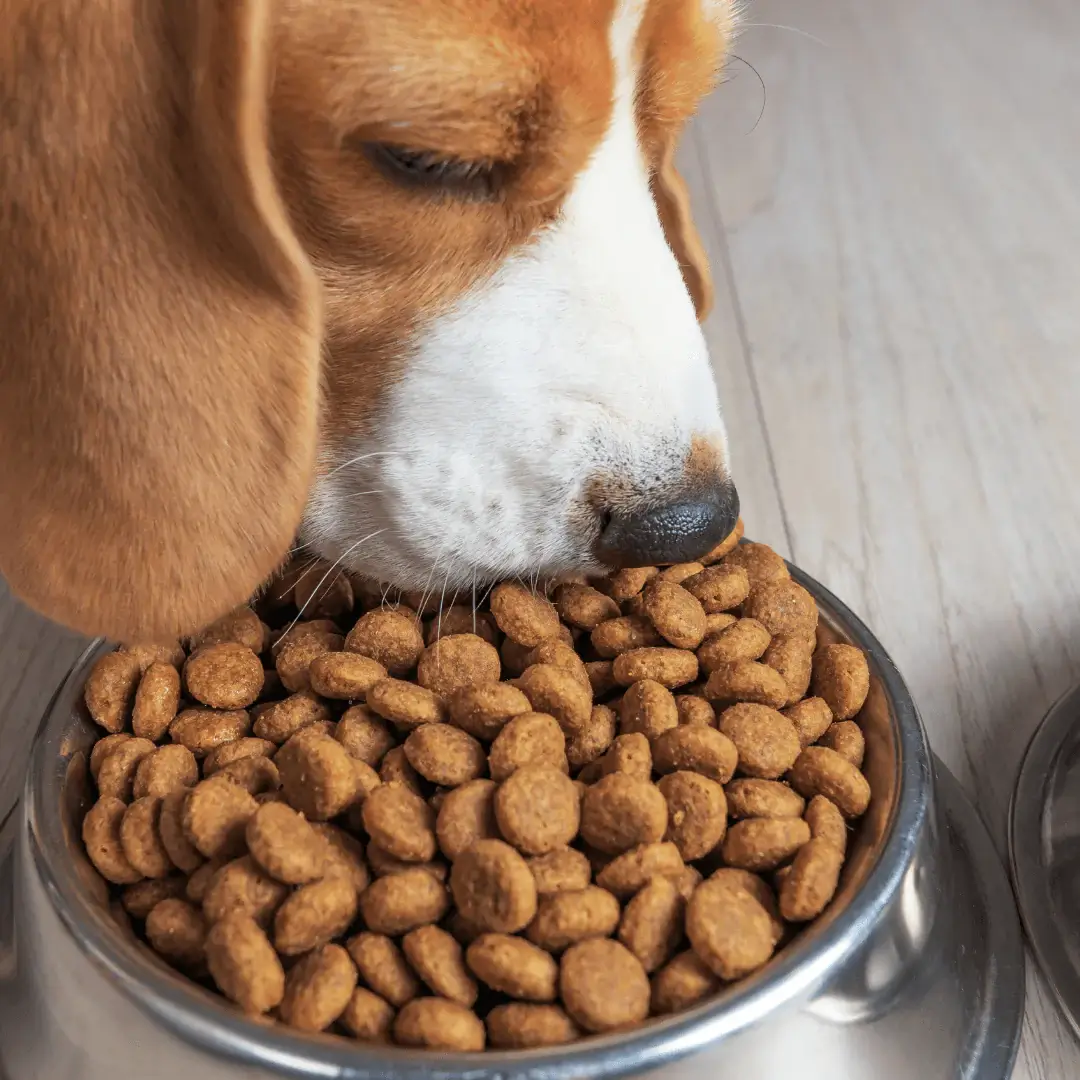New Study Investigates Dog Microbiome Worldwide


Written and verified by the biologist Cesar Paul Gonzalez Gonzalez
Microbiome is the name given to the group of microorganisms that live inside the intestine of some vertebrates. This community establishes a symbiotic relationship with its host, but don’t cause any harm to its health. In addition, they help in the body’s digestive tasks and help nutrients to be better absorbed. In this article, we’ll be taken a short look at dog microbiome and the latest investigations.
Due to their importance, many studies have focused on investigating what constitutes dog microbiome. This information could help to formulate diets that benefit the intestinal microorganisms, in order to improve dog nutrition at the same time. Read on and find out what a new study says about dog microbiome.
Are microbiota and microbiome the same thing?
Although the two terms are related, microbiota refers only and exclusively to the set of microorganisms that live in the intestine. In contrast, the microbiome encompasses both microorganisms and their metabolites, environmental conditions, and genomes.
When talking about the relationship and impact that microorganisms have on an animal’s body, it’s also necessary to consider their environment and everything that modifies them. For this reason, the term microbiome is usually more representative in specialized language. However, this doesn’t mean that it’s wrong to use the word “microbiota” as a synonym, but only in a colloquial context.

Why are microbiomes necessary?
It’s quite normal to think that the organs and systems that make up a living being are sufficient for the processing of food. However, without help, digestion would take a long time and there are certain materials that are quite difficult to assimilate, such as the cellulose that makes up plants. This is why the microbiome is so necessary, as it helps to make digestion more efficient and to obtain more nutrients from food.
In fact, the composition and quantity of the microorganisms that live in the intestine change according to the type of diet. This occurs because each of them specializes in degrading certain foods. Consequently, the microbiome of a herbivore is very different from the microbiome of a carnivore.
Why is it important to analyze the dog microbiome?
Because microbiome changes according to the food consumed by the animal, they can serve as an indicator of which diet provides the best benefits. In addition, they could also demonstrate whether there’s any harm in consuming commercial feed-type formulations. This opens up the possibility of improving pet nutrition, health, and quality of life.
Although understanding the composition of dog microbiome could create many long-term benefits, it’s very complicated to analyze them. To begin with, canine diets change according to the habits of their owners, among other things. This produces a great deal of variation in the microbiome. Therefore, it’s very difficult to obtain candidates that represent each of these variants.
In fact, the microorganisms of several dogs that are kept as pets have already been analyzed. The only problem is that most of them are fed commercial feed, so it isn’t possible to obtain hard data on their microbiome.

New findings on the dog microbiome
Despite the complications, a new study was published in 2022 that ventured to analyze the composition of the microbiome of several dogs. This would be one of the most comprehensive investigations to date, as it had samples from urban domestic dogs, rural domestic dogs, and stray dogs from all over the world. It also integrated some fossilized samples from their ancestors.
The researchers found that the Lactobacillus genus of bacteria appeared to be the most important in the dog microbiome. This is because a large number of species of this genus were found in all samples. While this is a breakthrough and could lead to the creation of new diets focused on promoting the growth of these bacteria, it’s still unknown what benefits they generate.
It’s clear that the study of the dog microbiome could greatly improve pet nutrition and quality of life. However, it’s still too early to create new foods or diets focused on changing or restoring the microbiome. So, for the time being, we can only wait for research to progress and produce new information on the subject.
Microbiome is the name given to the group of microorganisms that live inside the intestine of some vertebrates. This community establishes a symbiotic relationship with its host, but don’t cause any harm to its health. In addition, they help in the body’s digestive tasks and help nutrients to be better absorbed. In this article, we’ll be taken a short look at dog microbiome and the latest investigations.
Due to their importance, many studies have focused on investigating what constitutes dog microbiome. This information could help to formulate diets that benefit the intestinal microorganisms, in order to improve dog nutrition at the same time. Read on and find out what a new study says about dog microbiome.
Are microbiota and microbiome the same thing?
Although the two terms are related, microbiota refers only and exclusively to the set of microorganisms that live in the intestine. In contrast, the microbiome encompasses both microorganisms and their metabolites, environmental conditions, and genomes.
When talking about the relationship and impact that microorganisms have on an animal’s body, it’s also necessary to consider their environment and everything that modifies them. For this reason, the term microbiome is usually more representative in specialized language. However, this doesn’t mean that it’s wrong to use the word “microbiota” as a synonym, but only in a colloquial context.

Why are microbiomes necessary?
It’s quite normal to think that the organs and systems that make up a living being are sufficient for the processing of food. However, without help, digestion would take a long time and there are certain materials that are quite difficult to assimilate, such as the cellulose that makes up plants. This is why the microbiome is so necessary, as it helps to make digestion more efficient and to obtain more nutrients from food.
In fact, the composition and quantity of the microorganisms that live in the intestine change according to the type of diet. This occurs because each of them specializes in degrading certain foods. Consequently, the microbiome of a herbivore is very different from the microbiome of a carnivore.
Why is it important to analyze the dog microbiome?
Because microbiome changes according to the food consumed by the animal, they can serve as an indicator of which diet provides the best benefits. In addition, they could also demonstrate whether there’s any harm in consuming commercial feed-type formulations. This opens up the possibility of improving pet nutrition, health, and quality of life.
Although understanding the composition of dog microbiome could create many long-term benefits, it’s very complicated to analyze them. To begin with, canine diets change according to the habits of their owners, among other things. This produces a great deal of variation in the microbiome. Therefore, it’s very difficult to obtain candidates that represent each of these variants.
In fact, the microorganisms of several dogs that are kept as pets have already been analyzed. The only problem is that most of them are fed commercial feed, so it isn’t possible to obtain hard data on their microbiome.

New findings on the dog microbiome
Despite the complications, a new study was published in 2022 that ventured to analyze the composition of the microbiome of several dogs. This would be one of the most comprehensive investigations to date, as it had samples from urban domestic dogs, rural domestic dogs, and stray dogs from all over the world. It also integrated some fossilized samples from their ancestors.
The researchers found that the Lactobacillus genus of bacteria appeared to be the most important in the dog microbiome. This is because a large number of species of this genus were found in all samples. While this is a breakthrough and could lead to the creation of new diets focused on promoting the growth of these bacteria, it’s still unknown what benefits they generate.
It’s clear that the study of the dog microbiome could greatly improve pet nutrition and quality of life. However, it’s still too early to create new foods or diets focused on changing or restoring the microbiome. So, for the time being, we can only wait for research to progress and produce new information on the subject.
All cited sources were thoroughly reviewed by our team to ensure their quality, reliability, currency, and validity. The bibliography of this article was considered reliable and of academic or scientific accuracy.
- Moon, C. D., Young, W., Maclean, P. H., Cookson, A. L., & Bermingham, E. N. (2018). Metagenomic insights into the roles of Proteobacteria in the gastrointestinal microbiomes of healthy dogs and cats. Microbiologyopen, 7(5), e00677.
- Arias-Sánchez, F. I., Vessman, B., & Mitri, S. (2019). Artificially selecting microbial communities: If we can breed dogs, why not microbiomes?. PLoS biology, 17(8), e3000356.
- Wernimont, S. M., Radosevich, J., Jackson, M. I., Ephraim, E., Badri, D. V., MacLeay, J. M., … & Suchodolski, J. S. (2020). The effects of nutrition on the gastrointestinal microbiome of cats and dogs: impact on health and disease. Frontiers in Microbiology, 11, 1266.
- Yarlagadda, K., Zachwieja, A. J., de Flamingh, A., Phungviwatnikul, T., Rivera-Colón, A. G., Roseman, C., … & Malhi, R. S. (2022). Geographically diverse canid sampling provides novel insights into pre-industrial microbiomes. Proceedings of the Royal Society B, 289(1974), 20220052.
This text is provided for informational purposes only and does not replace consultation with a professional. If in doubt, consult your specialist.








